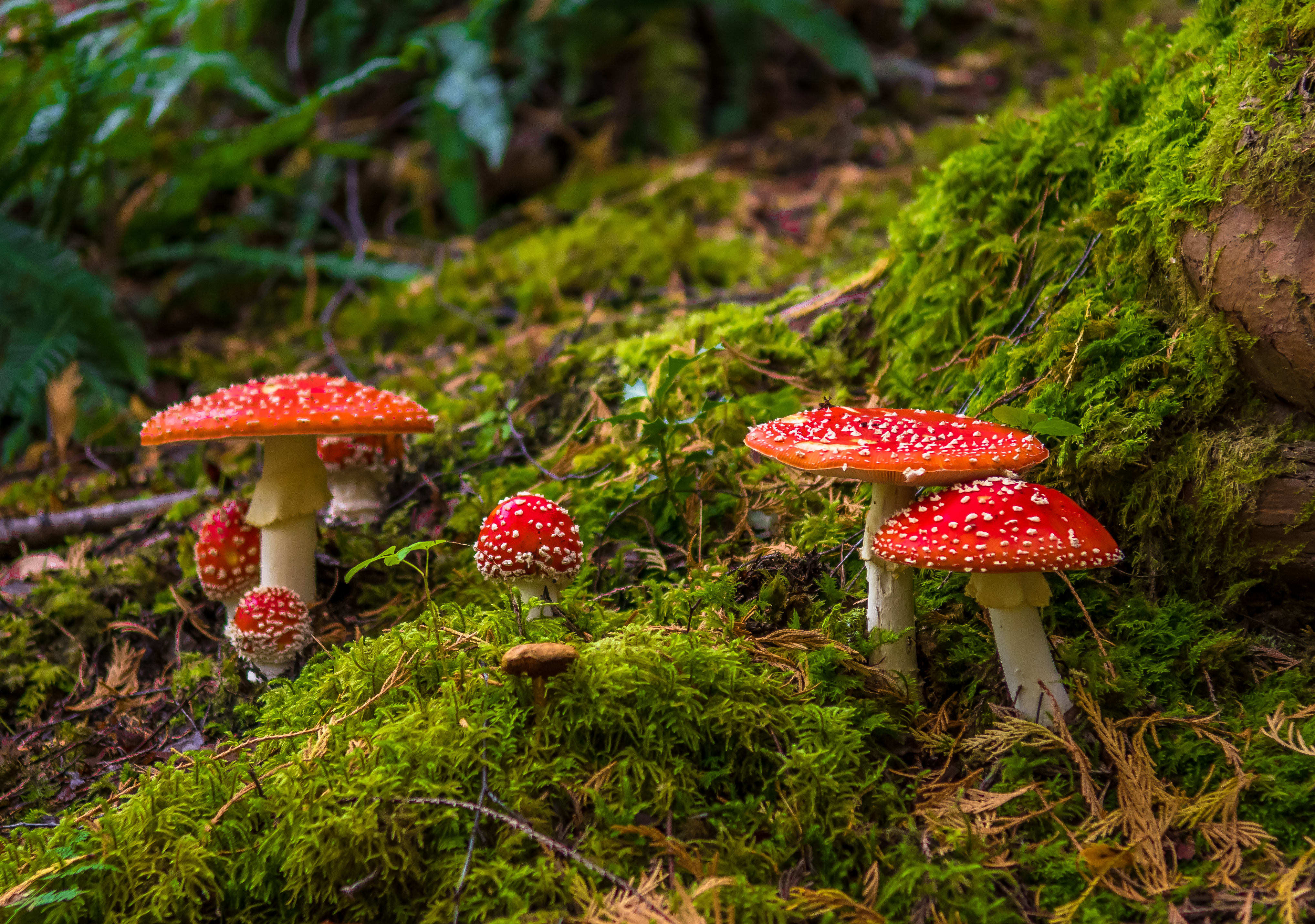6 books to read if you already miss The Last of Us
These should hold you over until season 2


When you make a purchase through links on our site, we may earn a commission
HBO's The Last of Us just wrapped its first season, and while a second season has been confirmed, it might be a while before fans reconnect with Joel, Ellie, and the Cordyceps-based zombie fungus threatening their world. But don't fret! If you're looking for something to fill the void that reminds you of the hit video game and series, there's a host of books you can read. There's even a "spore-horror" subgenre, also known as "sporror" or "spore core," says Vulture, "where mycelia and mosscaps become a driving force of terror, death, and destruction." Whether you're looking for more fungal horror, or to revisit a quarantined post-apocalyptic world, here are a few books to occupy you until The Last of Us returns.
If you're intrigued by the spore horror subgenre
What Moves The Dead by T. Kingfisher (2022)
The Week
Escape your echo chamber. Get the facts behind the news, plus analysis from multiple perspectives.

Sign up for The Week's Free Newsletters
From our morning news briefing to a weekly Good News Newsletter, get the best of The Week delivered directly to your inbox.
From our morning news briefing to a weekly Good News Newsletter, get the best of The Week delivered directly to your inbox.
The ways fungi can affect the mind is a central part of both The Last of Us and T. Kingfisher's What Moves The Dead, a retelling of Edgar Allen Poe's The Fall of the House of Usher. The story is set in 1890 when non-binary retired soldier Alex Easton shows up at their friend Madeline Usher's manor after hearing she is gravely ill. It turns out that the whole Usher family is sick, and the mansion and surrounding lake are covered in fungal growths. This invasive mushroom also afflicts the hares living on the grounds. Alex teams up with the "formidable de facto mycologist Ms. Potters," taking them on a journey that leads to what Vulture called "quite a climactic end." What Moves The Dead is a "knife-sharp tale in which absolutely nothing is wasted or unnecessary," Paste Magazine opines. Order here.
Mexican Gothic by Silvia Moreno-Garcia (2020)
"If you took the haunted-house-on-a-hill motif, set it in 1950s Mexico, and used a malevolent mycorrhizal network to tell a postcolonial tale full of weirdness and horror," you'd get Silvia Moreno-Garcia's Mexican Gothic, Vulture explains. The horror novel follows 1950's debutante Noemí who travels from Mexico City to a massive mansion in the countryside to save her cousin from the enigmatic Doyle family. Noemí soon discovers that the Doyle's depend on "a special strain of mushroom that helps keep them healthy, strong and preternaturally powerful," The New York Times writes. In Mexican Gothic, "the fungi are not the bad guys," the Times says. "Their impressive potency is just being misused by the malevolent." If you want to see the story play out on the small screen, the novel is being adapted for a series on Hulu. Order here.
The Girl With All The Gifts by M.R. Carey (2015)
A free daily email with the biggest news stories of the day – and the best features from TheWeek.com
Like The Last of Us, M.R. Carey's The Girl With All The Gifts features zombies created by Cordyceps. Some of the infected in the novel behave differently than the creatures Joel and Ellie face on their journey. Most of the "fungally challenged" in The Girl With All The Gifts act like typical zombies, but "some of the younger ones retain their intelligence along with their need to consume human flesh, and scientists want to know why," Vulture writes. Melanie is one of those children being studied and "vivisected in hopes of finding a cure." One doctor still sees Melanie as human, and when some of the less intelligent infected attack, she saves him. The two escape and join a group of people on their way to a larger stronghold. "While there are obvious similarities here to The Last of Us, The Girl With All the Gifts does something quite different with that basic premise," Vulture opines, especially with the ending, which is drastically different. Order here.
Other fungal horror books to read:
Fungi edited by Orrin Grey and Silvia Moreno-Garcia (2012); Agents of Dreamland by Caitlín R. Kiernan (2017); Creatures of Want and Ruin by Molly Tanzer (2018); Wanderers by Chuck Wendi (2015)
If you enjoy post-apocalyptic/dystopian storylines
The Seep by Chana Porter (2020)
Chana Porter's debut novel, The Seep, is about an alien invasion of the same name. The symbiotic alien entities have recreated the world into a utopian new society while functioning as a "mind-expanding drug that eliminates human mortality and grants people the power to transform their appearance at will," Publishers Weekly writes. Trina is happily living in the new society until her wife, Deeba, decides to be reborn as a baby to experience life, ending their relationship. "Like The Last of Us, it's about an inextricably changed world, but its main focus is on the grief and human emotions that come along with that," BookRiot says. The author "employs profound compassion and gentle humor to convey Trina's fear of change and distrust of complacency," Publisher's Weekly concludes. "Readers will delight in the eerie disquietude and optimism of this well-calibrated what-if." Order here.
The Passage by Justin Cronin (2010)
"In terms of a proxy dad figure shepherding a child through the apocalypse," The Passage by Justin Cronin "is the closest it gets to The Last of Us," BookRiot asserts. A military experiment escapes during a security breach, changing the world instantly. The survivors do what they must get by. One of those survivors, FBI Agent Brad Wolgas, is haunted by the things he's done to stay alive. When the opportunity arises to protect a young girl who was a part of the experiment that caused the apocalypse, Brad jumps at the chance to redeem himself. The Passage "is astutely plotted and imaginative enough to satisfy the most bloodthirsty reader," The New York Times wrote in a 2010 review. Order here.
Zone One by Colson Whitehead (2012)
After a pandemic has wiped out most of the world, two types of people are left, the infected and those who are not. Zone One by Colson Whitehead is set in Manhattan after the plague, as the uninfected try to rebuild a society safe from the hordes of infected zombies. Mark Spitz is part of a clean-up crew sent to cleanse the city of the last of the infected. "But coming to terms with this new world, especially in the grips of Post-Apocalyptic Stress Disorder, is no easy task," BookRiot says. Zone One transforms the typical zombie trope "into an allegory of contemporary Manhattan (and, by extension, America), where 'it was the business of the plague to reveal our family members, friends, and neighbors as the creatures they had always been'," Kirkus Reviews wrote, quoting Whitehead. Order here.
Other post-apocalyptic novels like 'The Last of Us':
Sorrowland by Rivers Solomon (2021); Wilder Girls by Rory Power (2019); The Sound of Stars by Alechia Dow (2020); The Tiger Flu by Larissa Lai (2018); So Long Been Dreaming: Postcolonial Science Fiction & Fantasy Edited by Nalo Hopkinson and Uppinder Mehan (2004)
Theara Coleman has worked as a staff writer at The Week since September 2022. She frequently writes about technology, education, literature and general news. She was previously a contributing writer and assistant editor at Honeysuckle Magazine, where she covered racial politics and cannabis industry news.
-
 US citizens are carrying passports amid ICE fears
US citizens are carrying passports amid ICE fearsThe Explainer ‘You do what you have to do to avoid problems,’ one person told The Guardian
-
 All roads to Ukraine-Russia peace run through Donetsk
All roads to Ukraine-Russia peace run through DonetskIN THE SPOTLIGHT Volodymyr Zelenskyy is floating a major concession on one of the thorniest issues in the complex negotiations between Ukraine and Russia
-
 Why is Trump killing off clean energy?
Why is Trump killing off clean energy?Today's Big Question The president halts offshore wind farm construction
